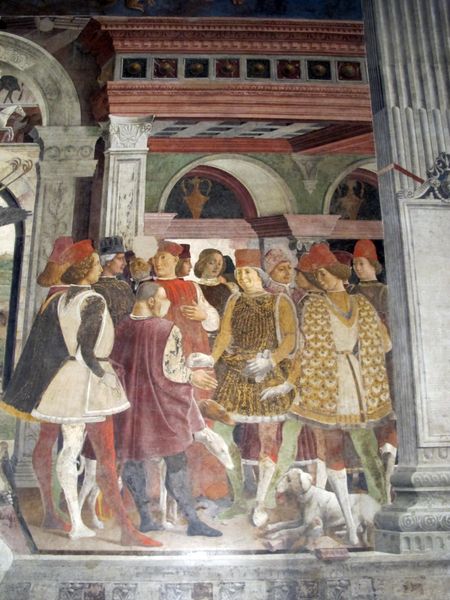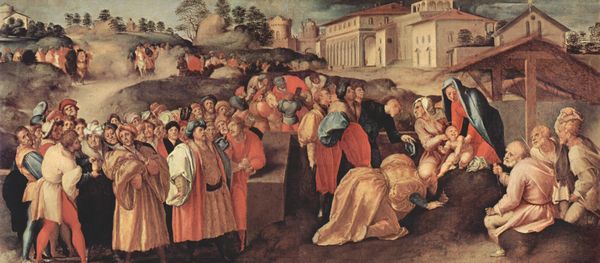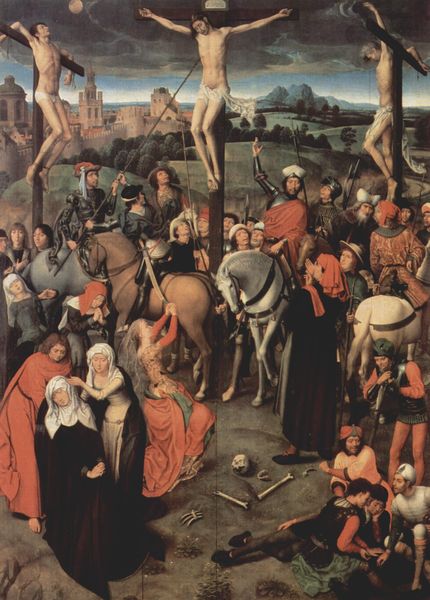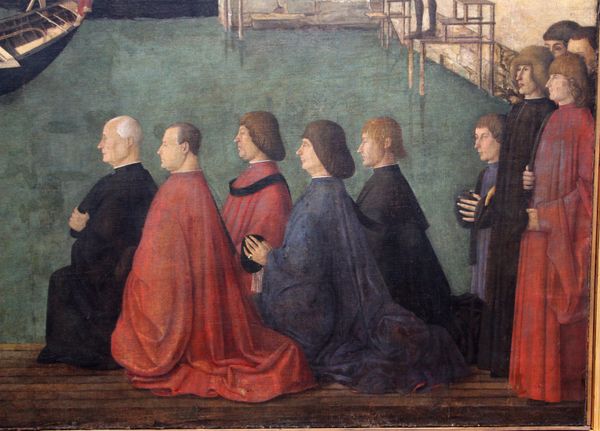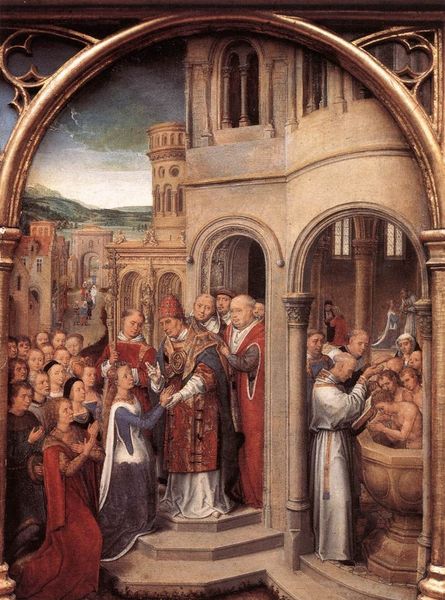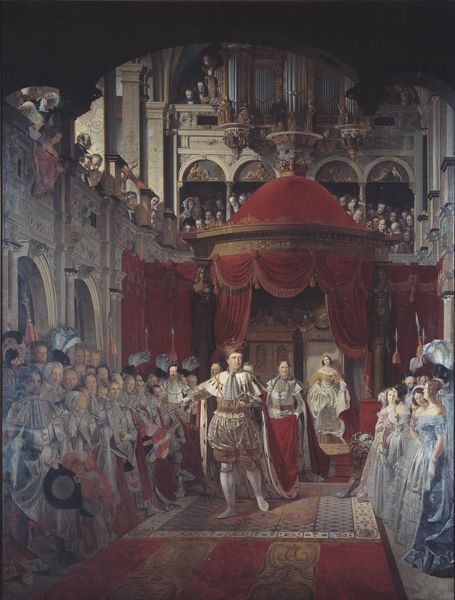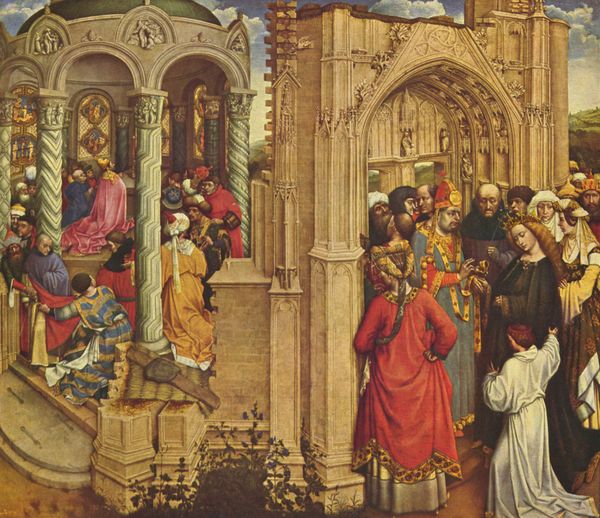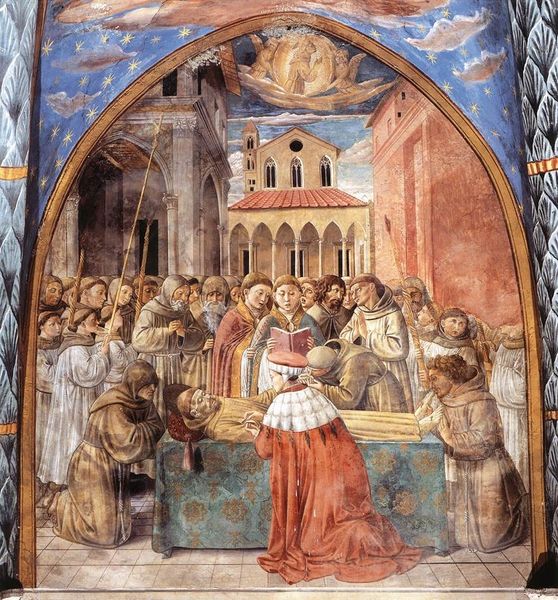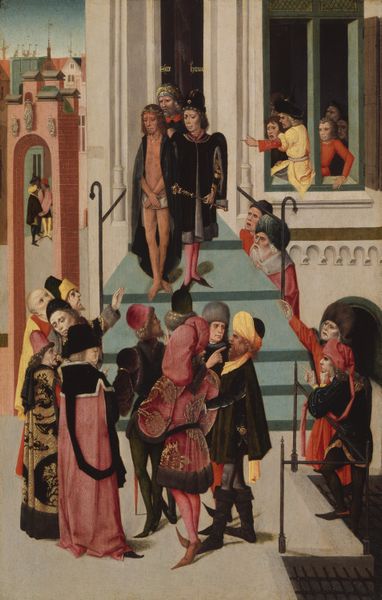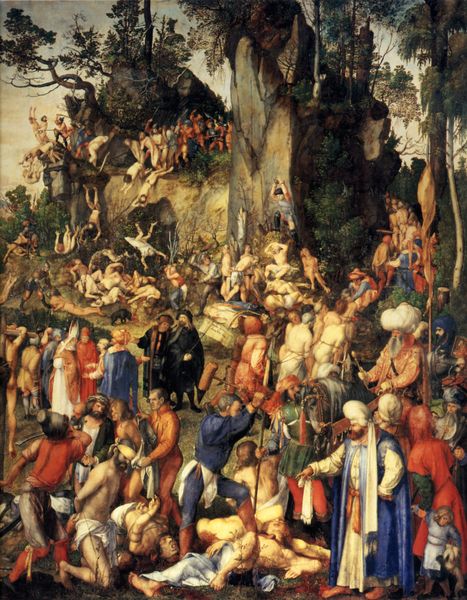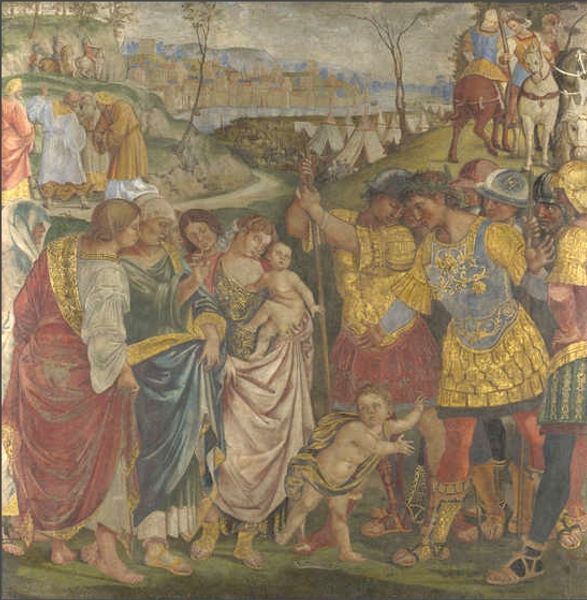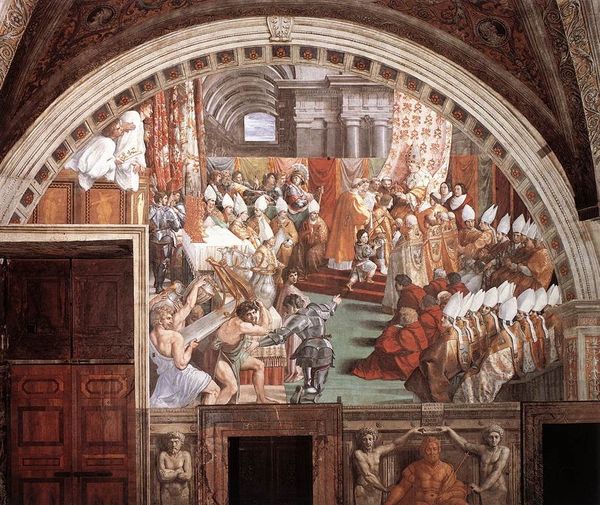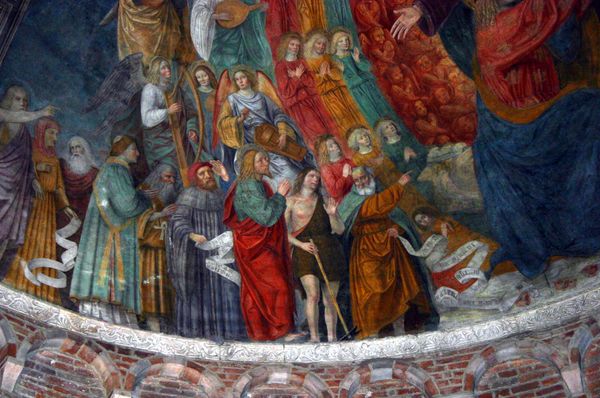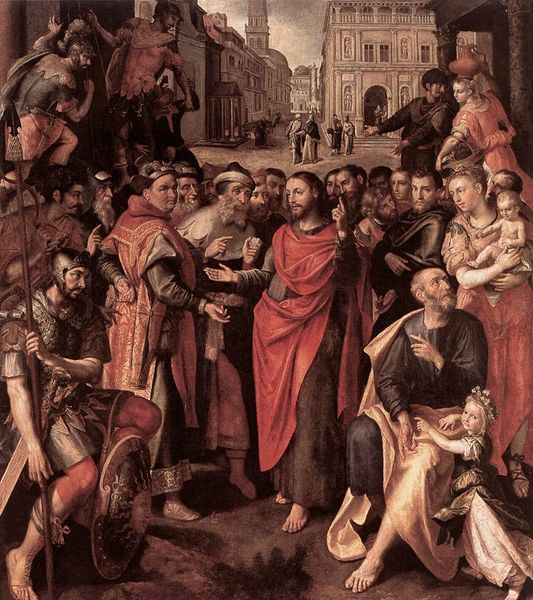
painting, oil-paint, textile
#
narrative-art
#
painting
#
oil-paint
#
textile
#
holy-places
#
figuration
#
text
#
oil painting
#
group-portraits
#
history-painting
#
italian-renaissance
Copyright: Public domain
Curator: Looking at this teeming scene, I'm struck by the density and the relative coolness of the tones. So many figures! Editor: Yes, this detail comes from Gentile Bellini's painting, "Miracle of the Cross at the Bridge of San Lorenzo," created around 1500. Bellini, working in oil paint and possibly textiles, captures a specific moment, not just a general ambiance. It's so interesting that what may seem a crowded space to a viewer like you, presents in fact an image embedded with complex politics. Curator: I do see the narrative element now, but the crush of faces, the dark clothing punctuated by paler skin… it conveys a sense of both excitement and perhaps…oppression? I wonder, who exactly were these people, and what kind of statements they carry through the composition? Editor: The painting documents a real event. A relic of the true cross fell into the canal, and after several failed attempts, it was miraculously retrieved by Andrea Vendramin, the future Doge. Bellini paints it right at the intersection of Venetian public spectacle, religious belief and its impact on the state identity and legitimacy, where each of those elements reinforces the other. Curator: Ah, so this isn’t just about religious piety; it's a deliberate projection of power. The carefully rendered likenesses of Venetian society… it’s a who’s who of the era! They become symbolic of Venice itself. Who do you think has most visibility, who has power and access? What gender, what class, do they appear to have? Editor: Precisely. Notice how Bellini strategically places Vendramin, who knelt and successfully retrieved the relic in a privileged space. His act, highlighted, validates his family's claim to power but is not exempt of the complexities regarding, at the time, new families ascending. But the people there also matter. Who are they showing deference to? The cloth merchants? The priests? Notice their behaviors too. The very act of portraying the miracle becomes a potent endorsement of the Venetian social order and those seeking to maintain their positions within it. Curator: A cleverly staged drama, then, leveraging the language of religious awe to bolster the existing hierarchy. Looking at it now, I appreciate the layers of meaning woven into what I initially perceived as a somewhat chaotic crowd scene. Editor: It speaks volumes about how art can function not just as a mirror reflecting society, but as an active agent shaping its understanding of itself.
Comments
No comments
Be the first to comment and join the conversation on the ultimate creative platform.

